Abstract
Activities of glyceraldehyde-3-phosphate dehydrogenase (EC 1.2.1.12) (GAP-DH) and aldolase (EC 4.1.2.13) in cells of Clostridium perfringens that had been inhibited with sodium nitrite were investigated. A complete loss in GAP-DH activity and a 67% decrease in aldolase activity were observed when growth of C. perfringens was inhibited. There was also a 91% decrease in the concentration of free sulfhydryl groups of soluble cellular components. Dithiothreitol restored some activity to inactive GAP-DH from sodium nitrite-inhibited cells, indicating that a loss of reduced sulfhydryl groups was involved in the inactivation of the enzyme. The evidence presented suggests that sodium nitrite inhibition of C. perfringens may involve an interaction of sodium nitrite as nitrous acid with sulfhydryl-containing constituents of the bacterial cell.
Full text
PDF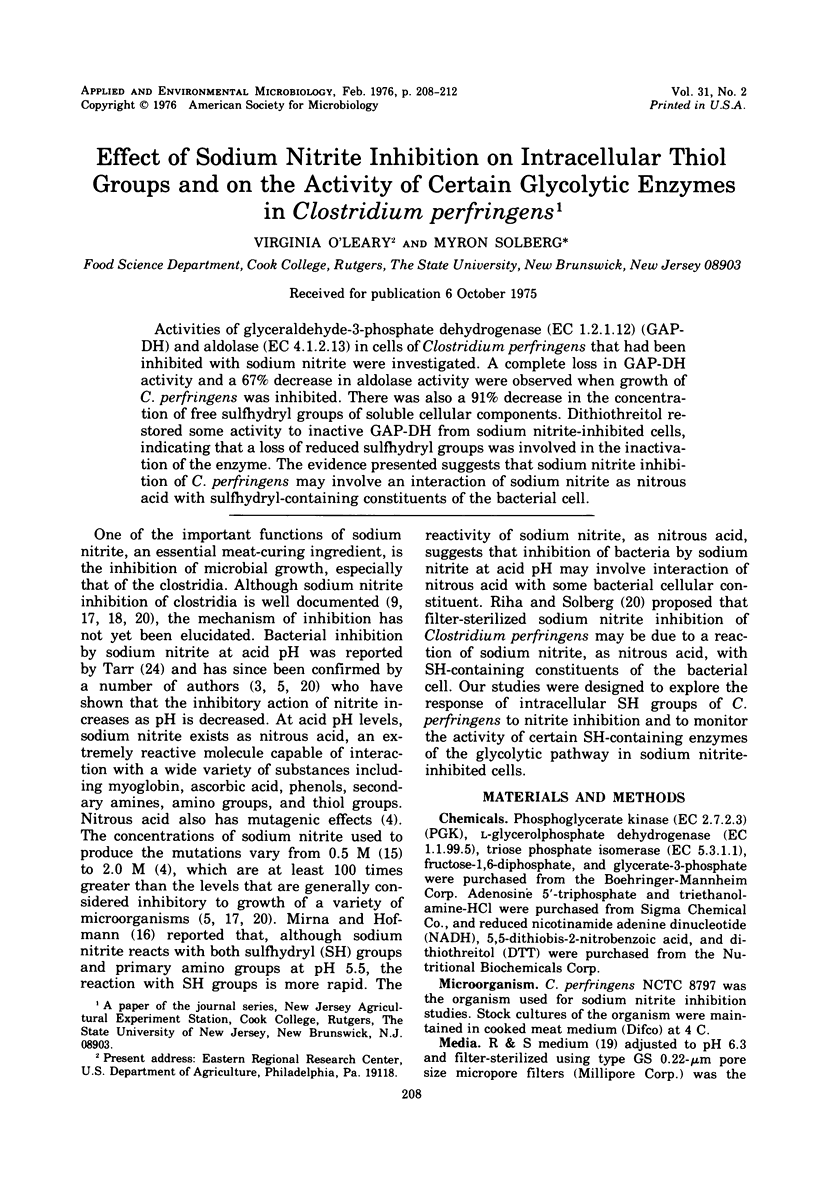
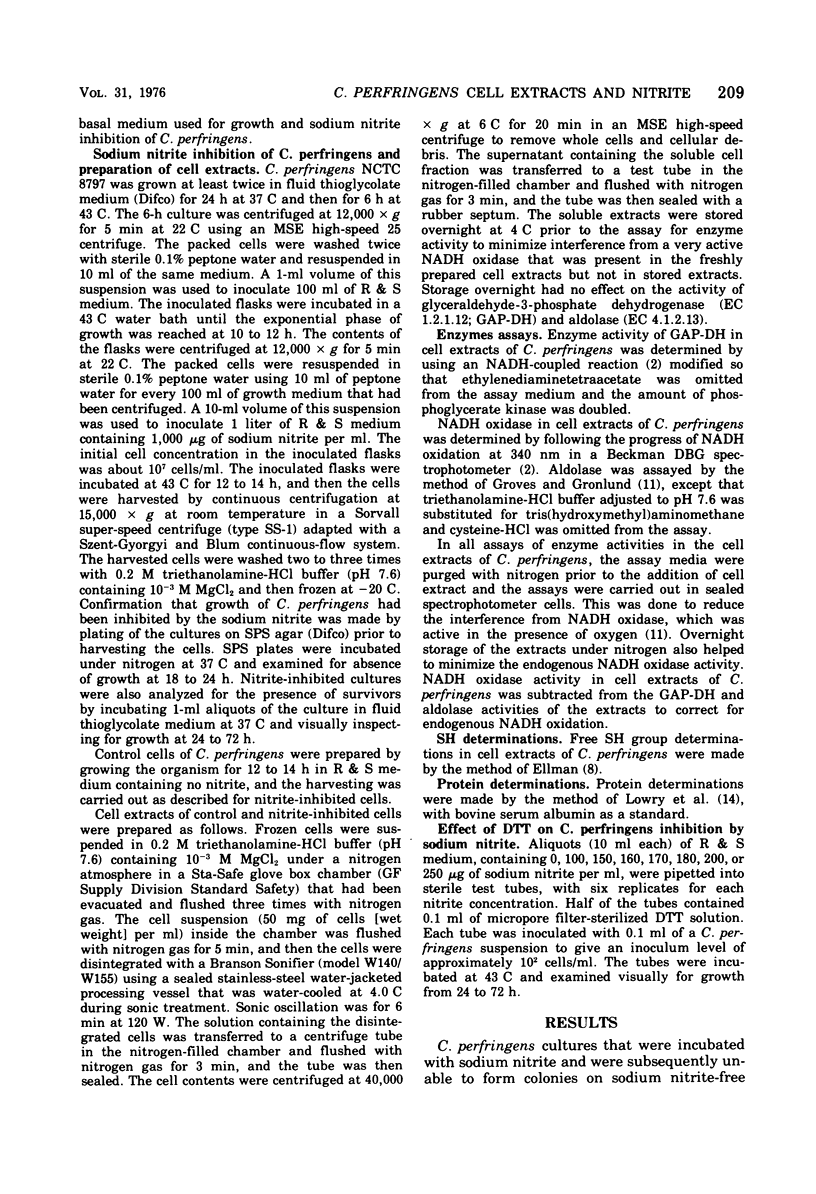
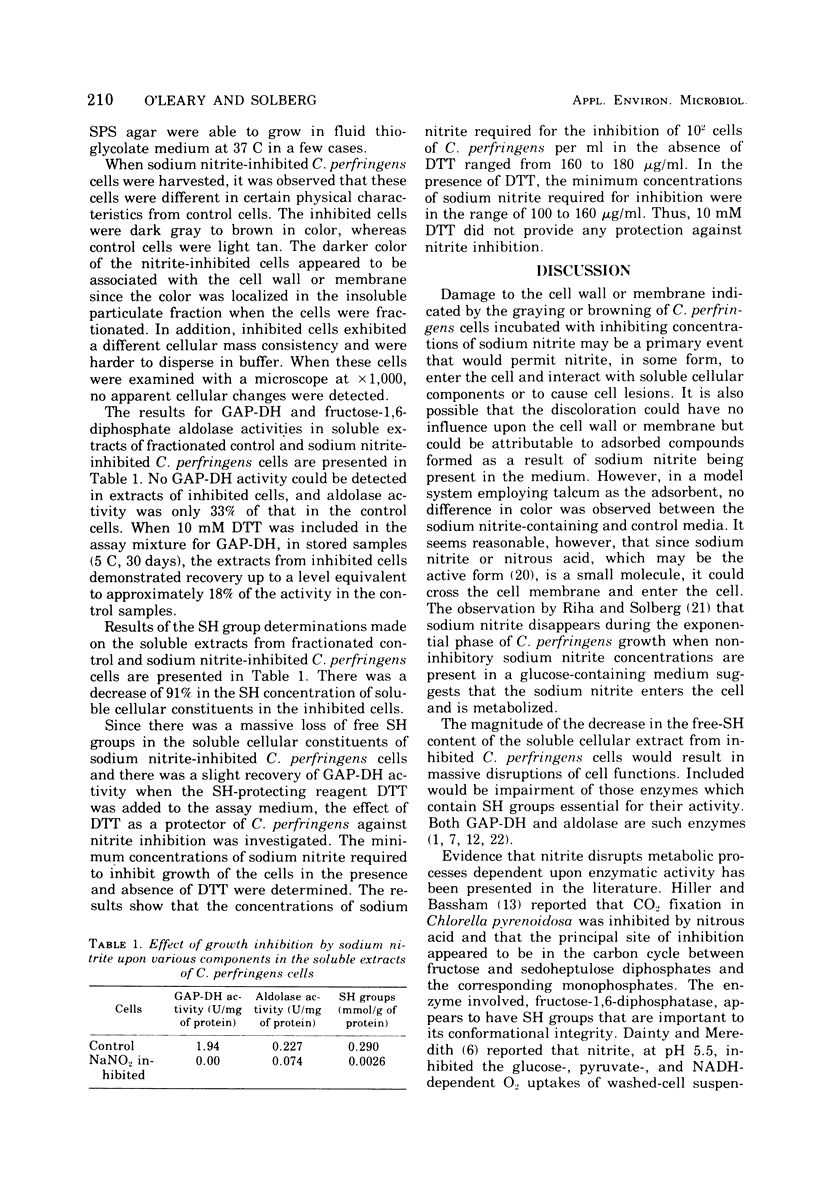
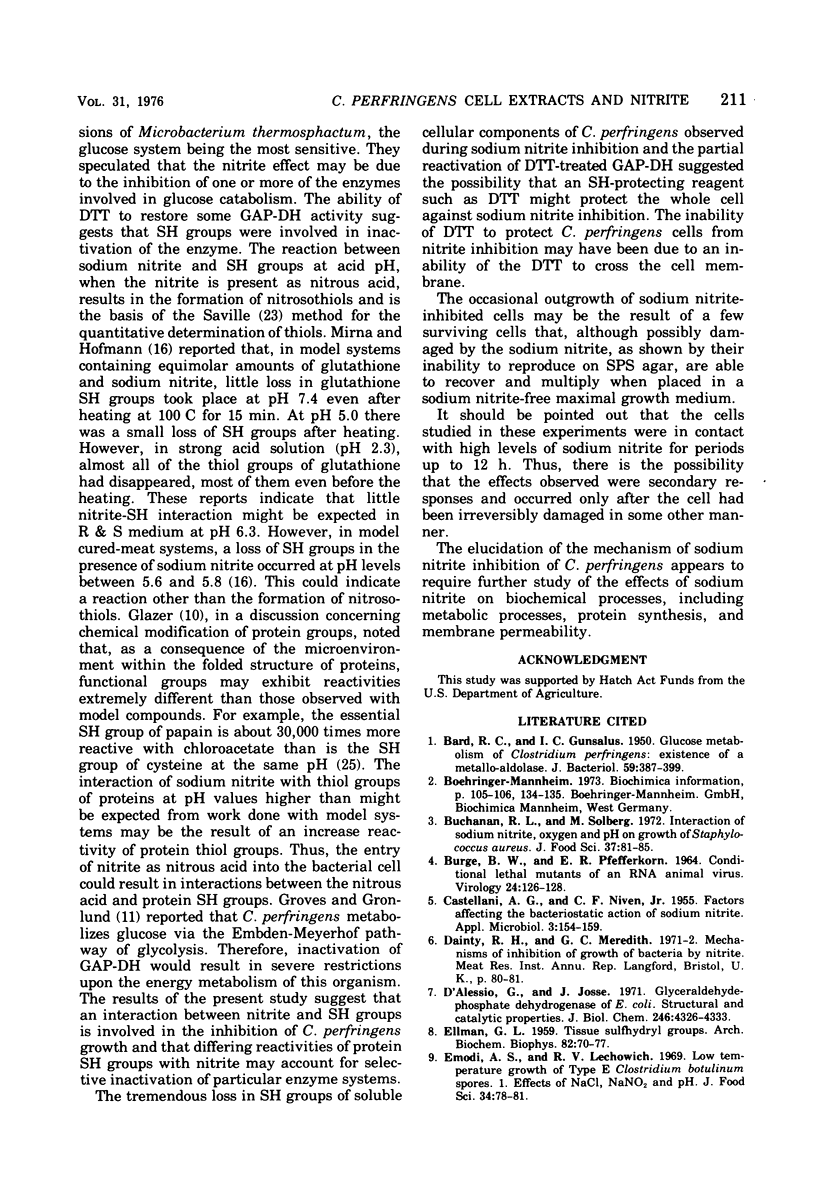
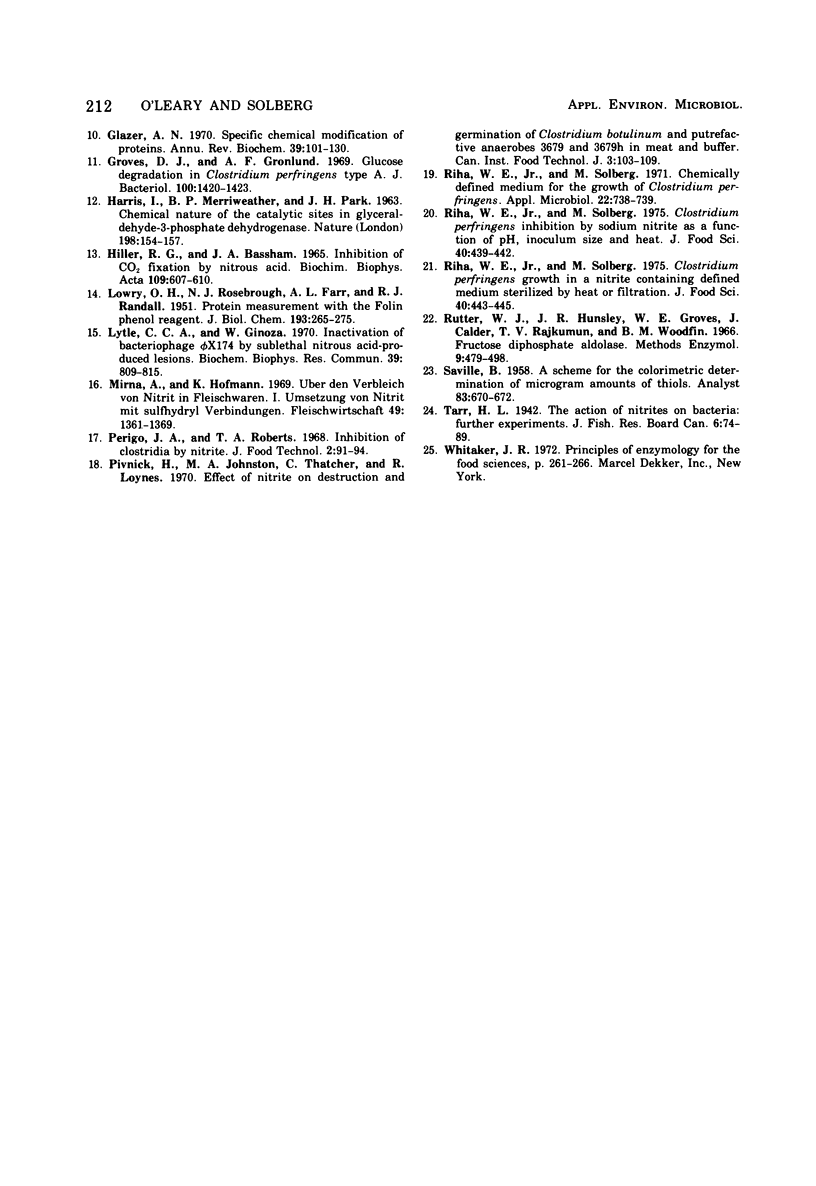
Selected References
These references are in PubMed. This may not be the complete list of references from this article.
- BARD R. C., GUNSALUS I. C. Glucose metabolism of Clostridium perfringens: existence of metallo-aldolase. J Bacteriol. 1950 Mar;59(3):387–400. doi: 10.1128/jb.59.3.387-400.1950. [DOI] [PMC free article] [PubMed] [Google Scholar]
- BURGE B. W., PFEFFERKORN E. R. CONDITIONAL LETHAL MUTANTS OF AN RNA ANIMAL VIRUS. Virology. 1964 Sep;24:126–128. doi: 10.1016/0042-6822(64)90161-8. [DOI] [PubMed] [Google Scholar]
- CASTELLANI A. G., NIVEN C. F., Jr Factors affecting the bacteriostatic action of sodium nitrite. Appl Microbiol. 1955 May;3(3):154–159. doi: 10.1128/am.3.3.154-159.1955. [DOI] [PMC free article] [PubMed] [Google Scholar]
- D'Alessio G., Josse J. Glyceraldehyde phosphate dehydrogenase of Escherichia coli. Structural and catalytic properties. J Biol Chem. 1971 Jul 10;246(13):4326–4333. [PubMed] [Google Scholar]
- ELLMAN G. L. Tissue sulfhydryl groups. Arch Biochem Biophys. 1959 May;82(1):70–77. doi: 10.1016/0003-9861(59)90090-6. [DOI] [PubMed] [Google Scholar]
- Glazer A. N. Specific chemical modification of proteins. Annu Rev Biochem. 1970;39:101–130. doi: 10.1146/annurev.bi.39.070170.000533. [DOI] [PubMed] [Google Scholar]
- Groves D. J., Grounlund A. F. Glucose degradation in Clostridium perfringens type A. J Bacteriol. 1969 Dec;100(3):1420–1423. doi: 10.1128/jb.100.3.1420-1423.1969. [DOI] [PMC free article] [PubMed] [Google Scholar]
- HARRIS I., MERIWETHER B. P., PARK J. H. Chemical nature of the catalytic sites in glyceraldehyde-3-phosphate dehydrogenase. Nature. 1963 Apr 13;198:154–157. doi: 10.1038/198154a0. [DOI] [PubMed] [Google Scholar]
- Hiller R. G., Bassham J. A. Inhibition of CO2 fixation by nitrous acid. Biochim Biophys Acta. 1965 Nov 29;109(2):607–610. doi: 10.1016/0926-6585(65)90187-1. [DOI] [PubMed] [Google Scholar]
- LOWRY O. H., ROSEBROUGH N. J., FARR A. L., RANDALL R. J. Protein measurement with the Folin phenol reagent. J Biol Chem. 1951 Nov;193(1):265–275. [PubMed] [Google Scholar]
- Lytle C. D., Ginoza W. Inactivation of bacteriophage phi-X-174 by sublethal nitrous acid--produced lesions. Biochem Biophys Res Commun. 1970 Jun 5;39(5):809–815. doi: 10.1016/0006-291x(70)90395-5. [DOI] [PubMed] [Google Scholar]
- Riha W. E., Jr, Solberg M. Chemically defined medium for the growth of Clostridium perfringens. Appl Microbiol. 1971 Oct;22(4):738–739. doi: 10.1128/am.22.4.738-739.1971. [DOI] [PMC free article] [PubMed] [Google Scholar]


